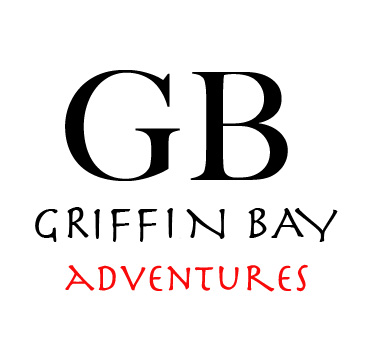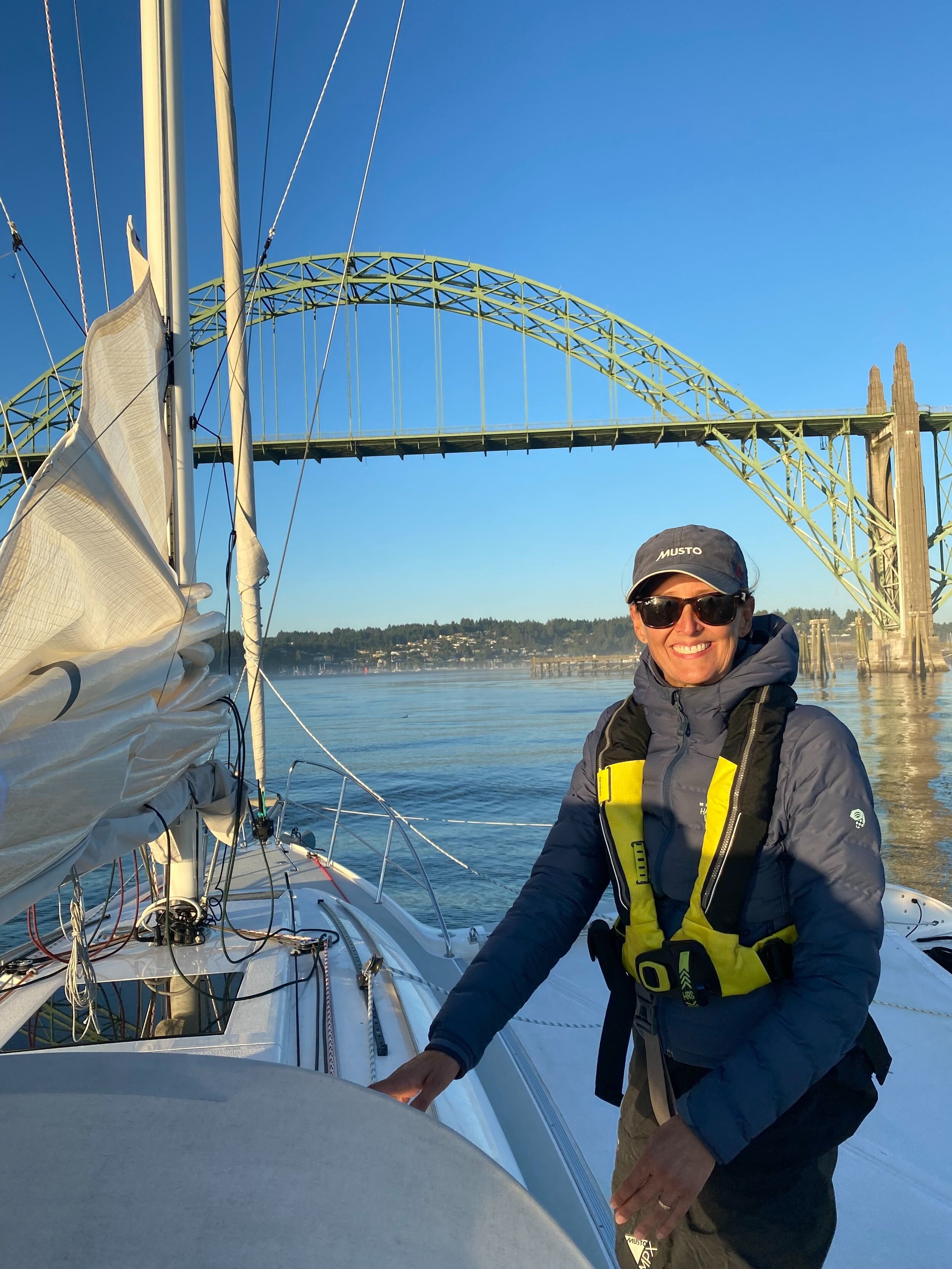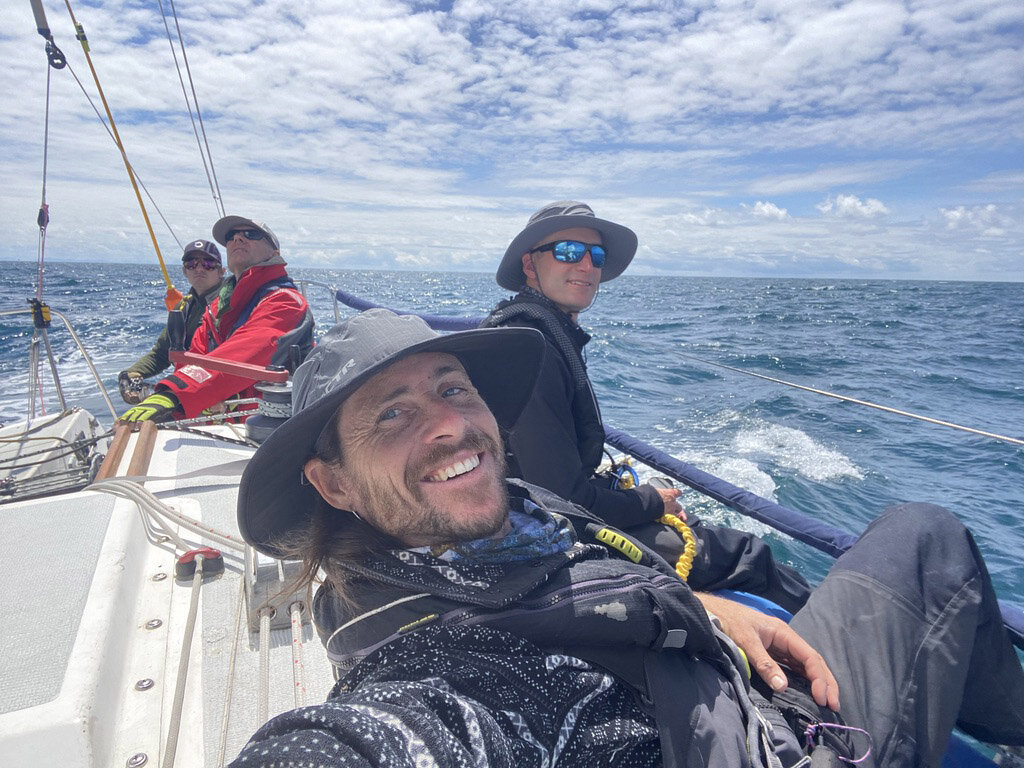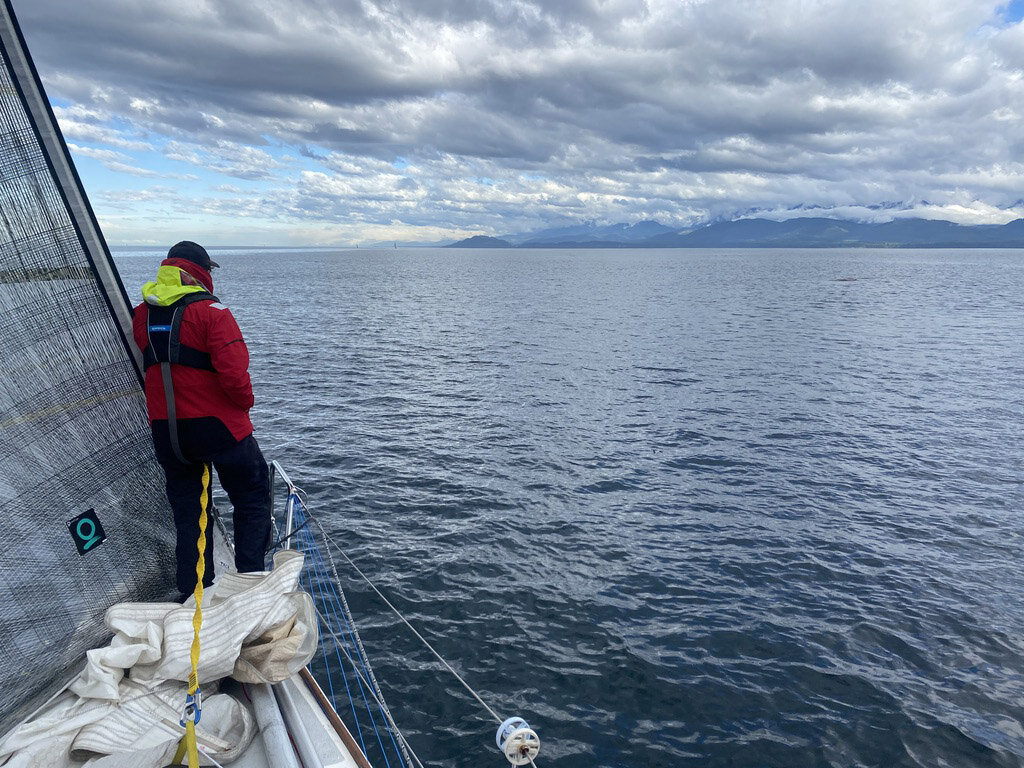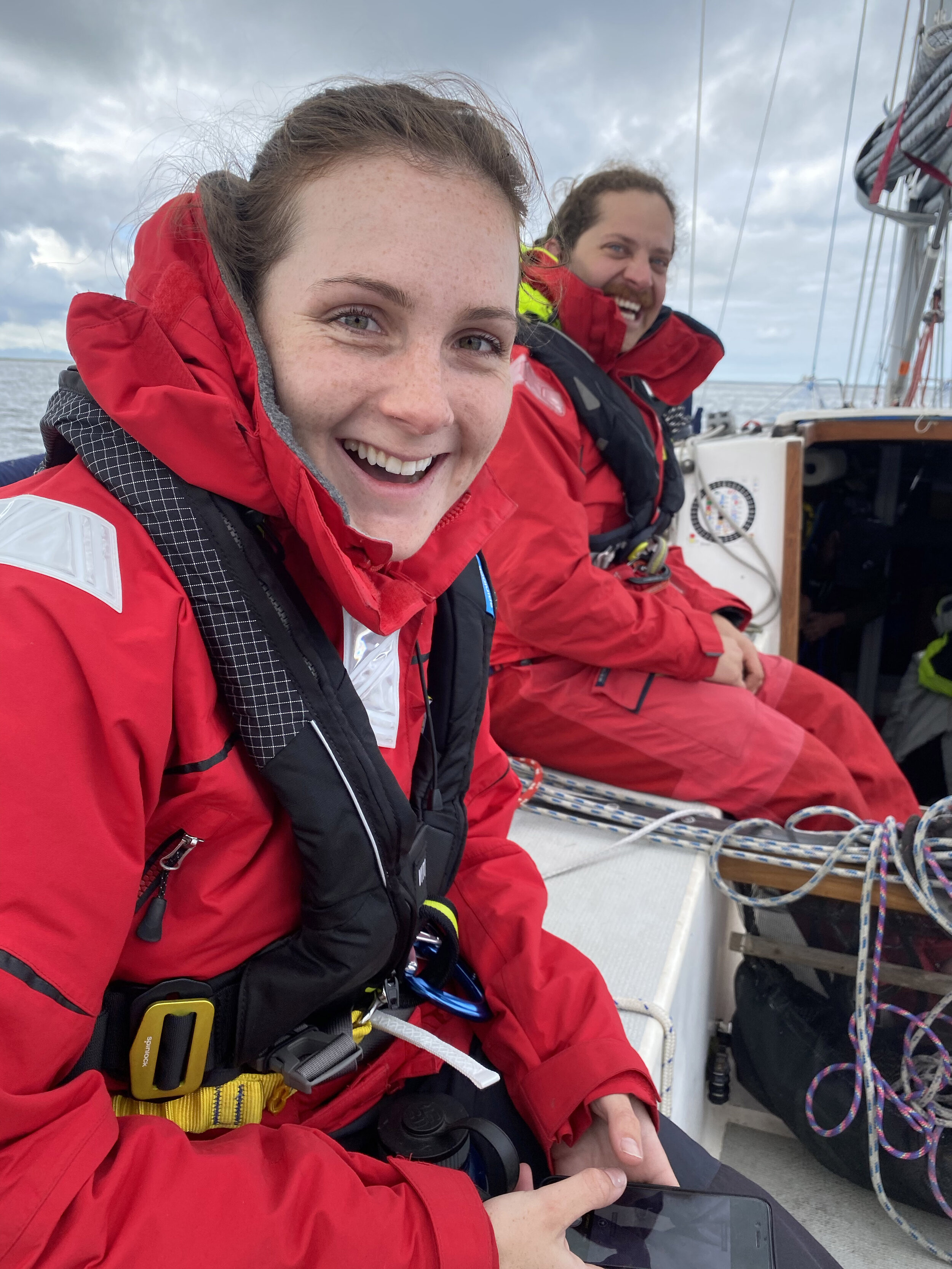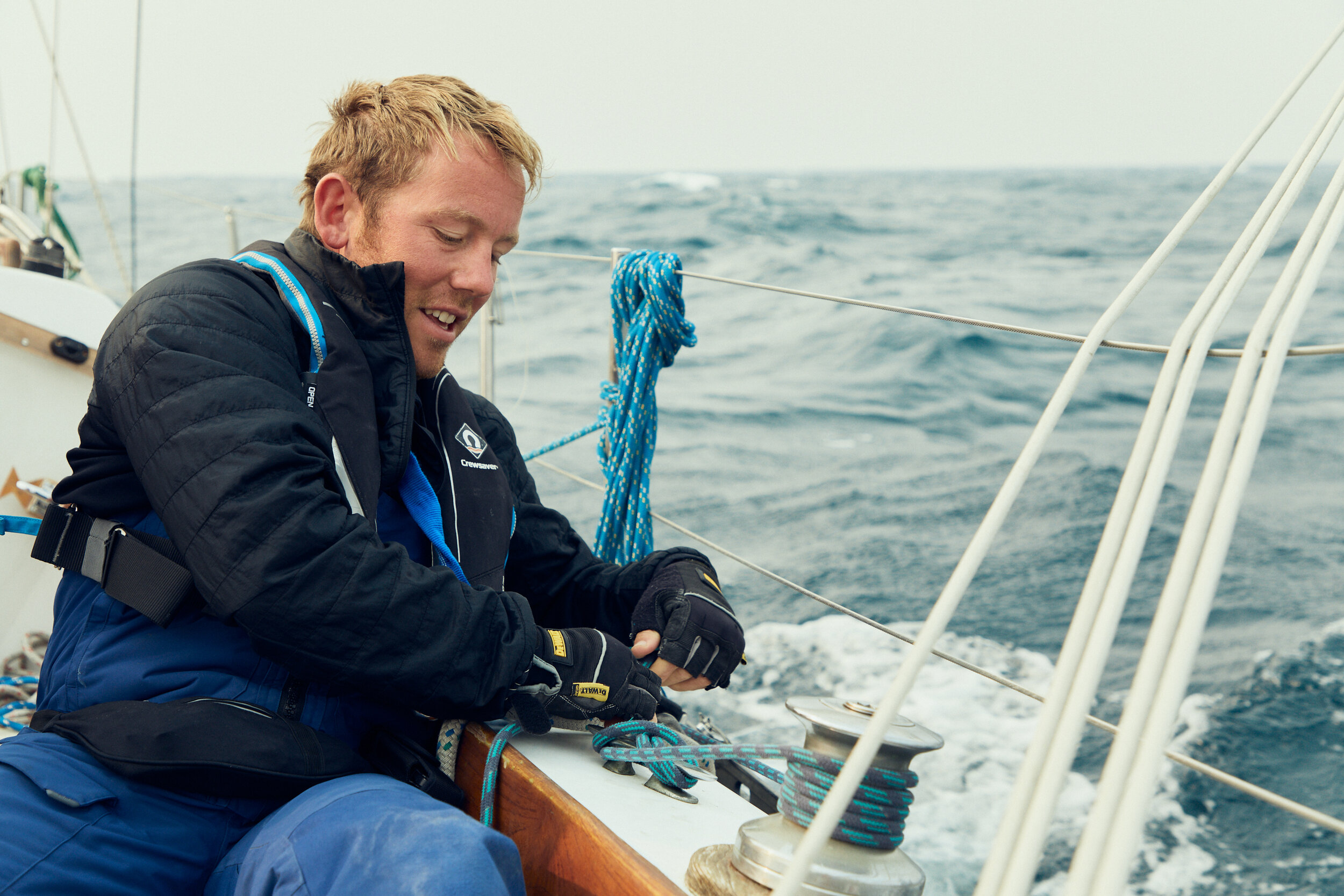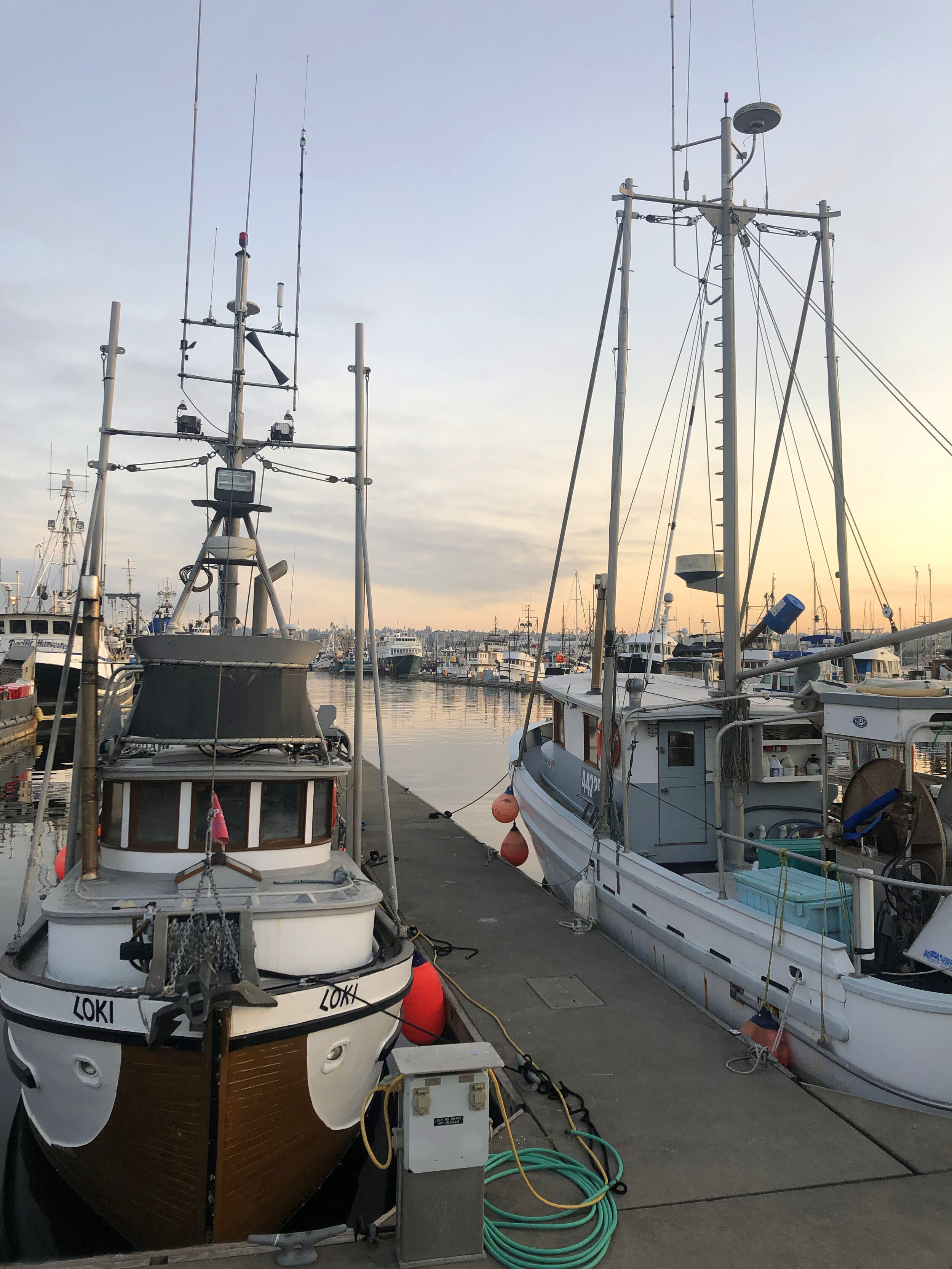Dragonfly 32
No sneaking in anywhere in this thing. We were the center of attention in Sekiu and quickly told we could not stay on this dock for long. As we couldn’t fit into the fuel dock we had to carry jerry cans to and from the pump.
High fives and good vibes abound but the crew needs fuel too. #roguebrewery
The trip began in Anacortes at 5:30 AM when our friend Jeff Hulme knocked on the hull. Our morning wake-up came baring doughnuts and coffee! We had planned to do the passage with Alan who was the owner, Jeff, and Lars Stranberg of the well-known and raced local multihull “Broderna“ but medical issues and work were going to prevent this allstar line up from coming together. Even before learning they couldn’t make it I had put out feelers for a fifth crew member as a backup and Maureen Crist had come back saying she was interested and available.
Jeff had been involved with the boat since its previous ownership so he gave his suggestions for backing the boat out of its tight slip on the headwalk. The Dragonfly 32 is a folding trimaran with a 26-foot beam so maneuvering in the marina is on par with a 120-foot powerboat. When you take up the entire fairway it’s good to leave at the crack of seagull farts.
Once clear of the Cap Sante breakwater I brought the little three-cylinder Yanmar up to 2500 RPM and was a little surprised to see our boat speed settle at 5 knots. I had figured the 6500-pound boat would go faster than that. Now thinking about it, three hulls and the drag they produce is not quick.
A call to the fuel dock in Neah Bay confirmed that the res was closed to not native people making the small seasonal fishing village of Sekiu our last opportunity to get fuel. We had four 5 gallon jerry cans to add to our 18 gallon built-in tank. A three-cylinder diesel should draw about .6 gal an hour and I had figured we could turn for 6 knots, breaking my rule of doing all dead reckoning at 5 knots. The weather window we had called for some motoring so we were going to have to get fuel somewhere after Sekiu.
We arrived at the little seasonal fishing camp at 7 pm and found a spot to tie up our beamy craft. We learned that we were going to have to walk our jerry cans up to a self-service fuel station. A small store shares the fuel pump and very generous hours 4 am to 9 pm is better than anywhere I’ve found on the West Coast so we were happy to get fuel at all. We were underway by 8 pm as the sun was setting.
The forecast at this point was for a little bumpiness at Cape Flattery and a Southerly. 11 knots AWS on a port tack and we were sailing as fast as we could motor and pretty much in the right direction. Later the Nightwatch shared a beautiful moonrise.
Tack to Starboard at Noonish not going the right way.
Moonlight sailing is the best
Newport!
As we crossed Astoria’s latitude I got a fresh report and it was looking we were going to have quite a bit more motoring in our future and that continuing would put us at Cape Blanko at a particularly bad time. Next stop, Newport OR. After burgers and a night of good sleep, we were out at the beginning of the flood. Blanko was a little bit of a worry at this point the GFS prediction on the Windy App called for up to 20 and the HRRRR on Predict wind was up to 30. The only good news was that it had an easterly component. Offering a chance of protection from the higher topography near the capes we were going to have to negotiate. We didn’t know how the boat would handle the seas so I delayed the commitment to round till we were off Coos Bay and our last bail-out point. Unfortunately, this lined up with the ebb and the bar reports we got from the USCG told us Coos Bay was closed to vessels under 35 feet. It was getting dark so this was going to be the last bar report and we wouldn’t know if it was passable on the flood. There was a good-sized westerly swell running at this point. Our next last-ditch bailout would be a small anchorage in the lee of Blanko called Port Orford. Then the fog that we had been going in and out of got really thick making that a more risky option. As it turned out the boat handled things quite well but we decided to motor sail with just the jib out. The mast had been broken on a prior attempt to truck the boat south and the replacement had a poorly aligned T track that had blown up some hard-to-get Rosnstan sail cars. It had been filed by a rigger unfortunately, the issue hadn’t been fixed. The big seas showed a bit more of the whites of eyes than I had seen so far. Its moments like these affirm a captain’s caution. The power of the ocean cannot be understood without experience. Just as you cant take pictures of waves that do their scale justice you must have had the experience like this on a boat heading the only way you can and no option to retreat. The experience of only being able to go forward to safer harbors or into a calmer day.
Once passed the worst of it it was looking like the wind was going to shut off and force us to motor the whole way in. It looked like we had another fuel stop in our future as well. These fuel stops sound easier than they are. You have to coordinate your bar crossing with the operating hours of the fuel dock and the time you are passing the port. This requires a bunch of Dead Reckoning to plan and choose a port. Fortunately, Crescent City is both in the lee of some land and is one of the only fuel docks on the West Coast not on the other side of a river’s bar.
We ducked in and through the fog and the temp rose about 30 degrees. Fueled up and were out again with enough to make it to San Fransisco.
We never saw Cape Mendicino but I was glad to pass it without any abuse.
We are 160 nautical miles north of San Fransisco the wind is not quite enough to sail as we gently glide over the now small waves into the damp fog under power. The trimarans trampolines that are stretched between the main hull that’s been our home for the past 5 days billow lightly up and down like white bat wings. The engine drones on as Sade plays on the stereo while the boat owner’s phone charges from the boat’s stereo and our only USB port. The chart plotter and integrated radar don’t have detailed charts uploaded so our phones are our only accurate forms of nav devices on board. Its 17:45 and in 15 minutes we will add the fuel that’s in the three jerry cans lashed under the traveler. After that, the only fuel to get us the remaining distance is in a partially full 5 gal jerry in the lazarette. The forecast is for 5 to 10 knots from the south for the next 24 hours. We will be arriving just after the slack before ebb. It should be about 1.5 knots.
Between fog, fuel limitations, currents on bars, bar closures to boats under 40 feet, and the fact that this boat is made to fold up; this boat’s delivery to SF is no exception in the manifold forms of stress involved with coastal passage making. Just now over the radio, the USCG relayed a tow request for a black Thunder Jet 30 offshore of Crescent City where we fueled up last. Even the cool kids are having a hard time today.
Once under the Golden Gate, the wind picked up adding another form of boat stress to our trip; Docking! We were going to have to partially fold an ama in to fit into the double slip waiting for us in a particularly windy marina.
Moe on the helm while fenders are deployed.
No problem!
